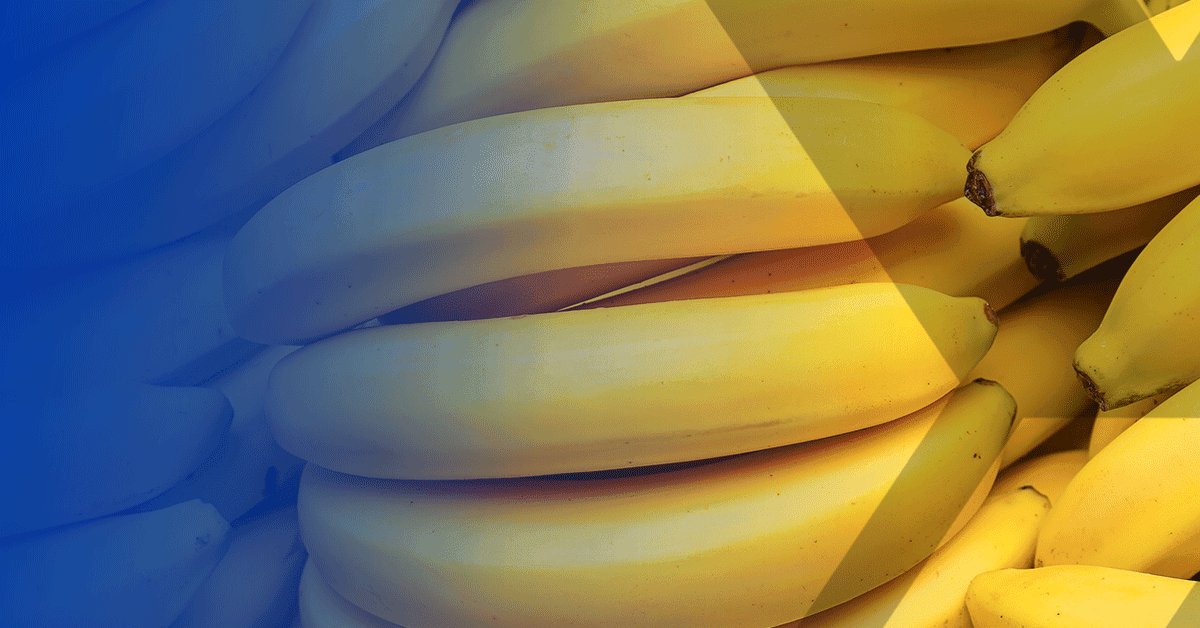
We know that eating a variety of plants is important, but researchers are now looking at how we can use plant food waste more efficiently. At its simplest, this means using more of the crop and reducing how much waste there is to start—but there are also ways to valorize waste by extracting key chemicals for use in other products or finding applications in chemical processes.
One option is to incorporate traditional plant waste products into our diet—which could simultaneously increase the nutritional value of foods and reduce the amount we throw away. Bananas are one such ingredient receiving attention, with researchers looking at flours made from their fibrous peels. Findings published in ACS Food Science & Technology suggest a positive effect on both shelf life and the antioxidant properties of cookies made using a small proportion of banana peel flour.1 And with millions of hits online for “cooking with banana peel,” the idea isn’t as fringe as it may seem, with recipes available for vegan bacon, curries, and cake.
There are also applications outside of nutrition, with fruit by-products paving the way for various green chemistry approaches. Beyond cookies, banana peel powder has proven to be useful for the adsorption of ammonium ions from waste water—an attractive and sustainable route to nitrogen reuse. Human urine accounts for up to 90% of nitrogen, 65% of phosphorus, and 80% of potassium in wastewater, contributing to a reduction of oxygen in aquatic environments. Study results show that banana powder is superior to other prominent biomass candidates that have been proposed for this process, which could be important for major industries including fertilizers and plastics, as well as in environmental remediation.2
Modified banana peel hydrochar could perform a similar role in removing heavy metals such as lead and cadmium from wastewater and immobilizing them in soil. In a study published in Langmuir, fresh banana peels and H3PO4 were co-carbonized in water at a low temperature under an air atmosphere, resulting in more enhanced adsorption properties than in unmodified peel hydrochar.3 The authors reported removal rates of more than 99% from various bodies of water as well as immobilization rates of more than 70% in soil—a significant improvement over the unmodified hydrochar (88-96% and 37-41%, respectively).
Food by-products could be big business. More than 870 million tons of fruit are harvested annually, with almost 50% processed as juice. From just citrus juice production alone, at least 25 million tons of waste are generated every year. The waste created after juicing fruits could be an important source of bioactive components—specifically phenolics, which function as antioxidants and could play an important role in the fight against diabetes and cancer, as well as offering anti-aging and neuroprotective effects.4
Fruit extracts may also prove useful in delivering antimicrobial properties for cosmetics, which could be quite important since infections by multidrug-resistant bacteria and fungi are now becoming a serious threat. As one team of researchers reports in ACS Applied Materials & Interfaces, the COVID-19 pandemic accelerated the race to find materials that could help limit or avoid the spread. The authors worked to develop a lipstick containing cranberry extract, which can disarm a broad range of microorganisms. The lipstick was able to successfully inactivate both enveloped and non-enveloped viruses as well as multidrug-resistant bacteria like Staphylococcus aureus (MRSA) and E. coli.5
Another approach to reducing plant waste is to improve crop quality so more of it can be eaten. This can be achieved through various genetic modification approaches, leading to improvements in diverse characteristics such as the aroma, flavor, nutritional value, or shelf life of important fruit crops such as mangoes.6
Eating “nose to tail” is already a well-known concept in the meat industry, but there is no reason why it also can’t become the norm for plant-based foods—and with continued advances in food sustainability and waste reduction, we may soon be able to efficiently put every part of our fruits and vegetables to good use.
References
- Shafi, A. et al. flours made from their fibrous peels. ACS Food Sci. Technol. 2022, 2, 8, 1355–1363.
- Singh, R. and Datta, B. Banana Peel Powder as an Effective Multilayer Adsorbent of Ammonium Ions. Ind. Eng. Chem. Res. 2022, 61, 50, 18464–18474.
- Ge, Q. et al. Highly Efficient Removal of Lead/Cadmium by Phosphoric Acid-Modified Hydrochar Prepared from Fresh Banana Peels: Adsorption Mechanisms and Environmental Application. Langmuir 2022, 38, 49, 15394–15403.
- Kandemir, K. et al. Fruit Juice Industry Wastes as a Source of Bioactives. J. Agric. Food Chem. 2022, 70, 23, 6805–6832.
- Tuñón-Molina, A. et al. Antimicrobial Lipstick: Bio-Based Composition against Viruses, Bacteria, and Fungi. ACS Appl. Mater. Interfaces 2022, 14, 51, 56658–56665.
- Datir, S. and Regan, S. Advances in Physiological, Transcriptomic, Proteomic, Metabolomic, and Molecular Genetic Approaches for Enhancing Mango Fruit Quality. J. Agric. Food Chem. 2023, 71, 1, 20–34.
